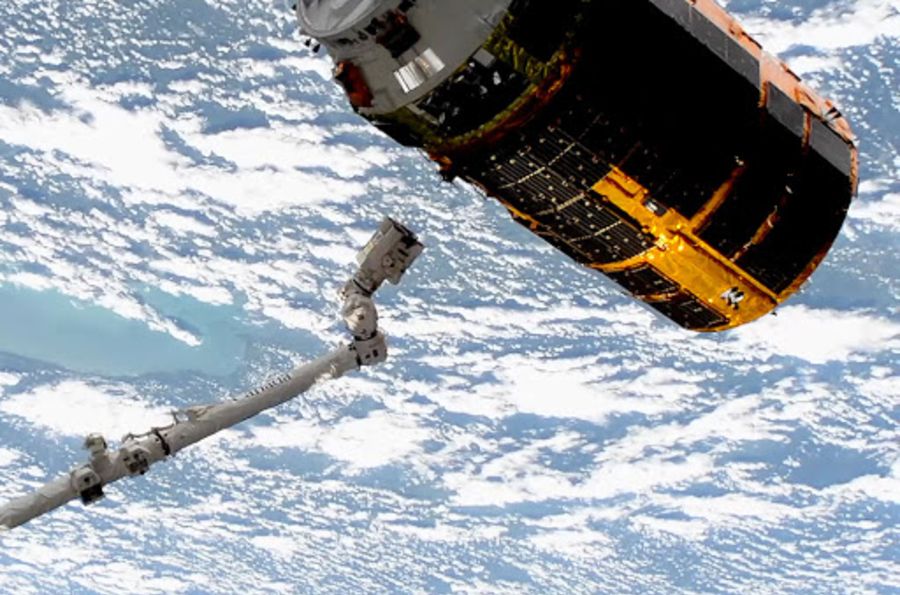
The Japanese cargo spacecraft arrived at the ISS (International Space Station) on 25th May 2020 to drop off the last section of payloads before retiring its fleet.
The unmanned ship arrived at the ISS on 25th May and was brought on board with the help of a robotic arm controlled by Chris Cassidy, astronaut at NASA and commander of the Expedition 63 crew. The spacecraft, weighing 12 tons, was captured as it travelled 400 kilometers over Tanzania. The HTV-9, also called H-II Transfer Vehicle 9, is constructed by the JAXA (Japanese Aerospace Exploration Agency), and is the recent vehicle in the fleet of disposable cargo space vehicles which have transported payloads to the ISS in the past decade. The spacecraft launched from the Tanegashima Space Centre in Japan on 20th May 2020 aboard the H-IIB launcher. This was also the rocket’s concluding flight in the mission. The space agency is planning to retire the spacecraft to pave the way for the HTV-X cargo ship which will launch atop a booster two years from now.
The new spacecraft is capable of self-docking which eliminates the need for engineers to capture the spacecraft with a robotic am. Moreover, the HTV-X will come with a reusable module to transport cargo back and forth from the ISS. The dimensions of the spacecraft are over 30 feet in length and 14 feet in width. The vehicle is capable of carrying supplies weighing up to 5.4 tons in a pressurized cabin or a pallet for external use.
The HTV-9 is delivering supplies weighing over 3,500 kg such as batteries for solar arrays for the crew onboard the ISS which will be installed during a spacewalk later in 2020. The cargo ship is also transporting water, food, payloads for scientific experiments. The officials at NASA also stated that the spacecraft will test a wireless communication system to be utilized by the HTV-X.






